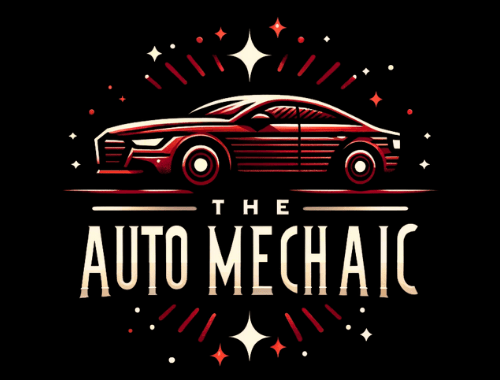We’ll shed light on which model years have proven to be steadfast companions on the road and those that may warrant extra consideration. If you’re a Corvette enthusiast or simply curious about the trustworthiness of these iconic vehicles, join us as we unveil the insights that will help you navigate the landscape of C5 Corvette reliability.
Are C5 Corvettes Reliable?
Yes, C5 Corvettes are reliable. They are generally considered reliable sports cars, offering a blend of performance and dependability. Among the C5 generation, specific years are notably more reliable than others. The years around the middle of the production run, such as 1999, 2000, 2002, and 2003, are the most stable regarding reliability.
These years benefited from refinements and factory adjustments that addressed early issues. However, while C5 Corvettes are known for their overall reliability, individual cars’ maintenance history and care can play a significant role in their long-term dependability. Regular maintenance and thorough inspections are essential for ensuring the continued reliability and performance of any C5 Corvette.
A Quick Overview Of the C5 Corvette
The C5 Corvette, produced by Chevrolet from 1997 to 2004, marked the fifth generation of this iconic American sports car. Renowned for its performance, sleek design, and technological advancements, the C5 Corvette reinvigorated the Corvette brand and solidified its position as a true high-performance vehicle. Here’s a quick overview of the C5 Corvette:
Design and Styling
The C5 Corvette introduced a sleek and aerodynamic design, departing from the previous generation’s rounder edges. It featured a more angular and aggressive look, with pop-up headlights and distinctive rear haunches. The body was constructed using lightweight materials, including a hydroformed steel frame and composite body panels, improving performance and fuel efficiency.
Powerful Engine Options
The C5 Corvette came equipped with potent engine choices. The standard powerplant was a 5.7-liter LS1 V8 engine, delivering impressive horsepower and torque figures. As the years progressed, the engine underwent enhancements, resulting in improved performance and acceleration. The C5’s power offerings pinnacle was the Z06 model, featuring a 385-horsepower LS6 engine and enhanced handling capabilities.
Performance and Handling
The C5 Corvette was lauded for its exceptional performance on the road and the track. Its advanced suspension system, including the optional Magnetic Selective Ride Control, allowed for precise handling and a smooth ride. The C5’s lightweight construction, well-balanced chassis, and robust engines enabled it to achieve impressive acceleration and top speeds.
Technological Advancements
The C5 Corvette showcased a range of innovative technologies for its time. It introduced the use of drive-by-wire throttle, enhancing throttle response and control. Additionally, features like Active Handling System (AHS) and Head-Up Display (HUD) augmented the driving experience by improving safety and providing essential information directly to the driver.
Convertible and Coupe Options
The C5 Corvette was available in both coupe and convertible body styles, offering enthusiasts the choice between open-top exhilaration and the traditional coupe design. The convertible featured a power-operated top for seamless roof retraction, while the coupe boasted a removable targa roof panel for an open-air feel.
Legacy and Impact
The C5 Corvette played a significant role in rejuvenating the brand and solidifying its place in automotive history. It showcased a balance of performance, comfort, and modern amenities, attracting many enthusiasts. The C5’s successful blend of classic Corvette elements with modern advancements set the stage for subsequent generations of Corvettes.
Some Best Features Of C5 Corvettes
The C5 Corvette introduced many remarkable features that solidified its position as a high-performance sports car. From its potent engine choices to innovative technology and thoughtful design, the C5 offered an exceptional driving experience.
1. Strong Engine Choices
The C5 Corvette boasted a 5.7-liter LS1 V8 engine, delivering 345 horsepower upon its debut in 1996. This power was later increased to 350 horsepower in 2001. For even more excellent performance, the LS6 model arrived in 2001 with an impressive 385 horsepower, catering to enthusiasts seeking exhilarating acceleration.
2. Drive-By-Wire Accelerator
The C5 pioneered drive-by-wire throttle technology in Corvettes—this innovative feature utilized electronics to perform mechanically linked functions within the vehicle, enhancing precision and responsiveness.
3. Excellent Fuel Efficiency
Despite its high-performance nature, the C5 Corvette offered impressive fuel efficiency. This was a significant departure from earlier Corvettes, allowing enthusiasts to enjoy thrilling drives without compromising fuel economy.
4. Capability to Compete
The C5 Corvette held its own among top-tier sports cars of its era, including the Ferrari 355 and Aston Martin DB7 Vantage. Its impressive 0-60 mph acceleration times showcased its competitive edge on the performance front.
5. Retractable Headlights
The C5 retained the classic charm of retractable pop-up headlights, a feature that has captivated car enthusiasts for decades. It shared this design element with iconic vehicles like the Lotus Esprit V8, making it a notable part of the Corvette’s identity.
6. In-Head Visuals
The introduction of a head-up display in 1999 was a game-changer for the C5. Displaying crucial vehicle data directly onto the windshield, this technology allows drivers to stay informed while keeping their focus on the road ahead.
7. Easier Control
The C5’s design enhancements extended to its handling. A transaxle unit was created by placing the gearbox at the rear, resulting in a balanced 50/50 front/rear weight distribution. This improvement contributed to better overall control and maneuverability.
8. Choices in Body Type
Chevrolet catered to diverse preferences by offering fastback coupe and convertible body styles for the C5 Corvette. This allowed drivers to choose a configuration aligned with their desired driving experience and style.
9. Lightweight Construction
The C5’s emphasis on weight reduction contributed to its remarkable fuel efficiency. From using lightweight aluminum in the engine and body panels to adopting run-flat tires, these measures collectively contributed to the C5’s relatively light curb weight.
Common Drawbacks Of C5 Corvettes
Here are six common issues that C5 Corvette owners may encounter:
1. Dual Climate Control Malfunctions
Owners may experience uneven temperature distribution, with one side blowing hot air while the other remains cool. This issue could stem from improper installation of a new head unit or problems with the blend door synchronization, requiring professional attention.
2. Blend Door Actuator Problems
Erratic airflow or uneven cooling may result from malfunctioning blend door actuators. Resetting the system by removing fuses or checking vacuum hoses can sometimes rectify the issue, but persistent problems may demand more extensive repairs.
3. Blend Door Actuator Failures
If the cabin’s air conditioning works only partially or the airflow is either excessively strong or nonexistent, faulty blend door actuators could be to blame. These components regulate temperature and ventilation based on signals from the head unit.
4. Vacuum System Leaks
Lack of air pressure or insufficient vacuum can lead to compromised temperature control. Vacuum hoses are prone to leaks, breaks, or disconnections, affecting the system’s overall functionality.
5. Compressor Leaks
Leaking compressors are a prevalent cause of temperature control system failures. A simple visual inspection of the compressor can reveal leaks, which compromise the air conditioning system’s cooling ability.
6. Electrical System and Grounding Issues
Starting problems may be attributed to battery, starter, or alternator issues. Faulty grounding points, represented by the 13 chassis ground points in the C5 Corvette, can lead to intermittent or nonexistent electrical connections. Regular chassis ground maintenance can help prevent these issues.
Most Reliable C5 Corvette Years
The C5 generation spanned from 1997 to 2004; some years were particularly robust and trustworthy. Let’s explore the most reliable C5 Corvette years that have garnered a reputation for their stability and dependability.
1999: Refined and Reliable
By the time the 1999 C5 Corvette came into the picture, many of the early issues that plagued earlier models had been successfully addressed. Notably, the steering wheel lock problem occurrences were significantly reduced compared to previous years. This year’s model exhibited enhanced dependability, marking a notable improvement over its predecessors.
2000: A Mid-Generation Gem
The 2000 C5 Corvette is a testament to the benefits of a mid-generation model. Positioned around the midpoint of the C5’s production run, it reaped the rewards of factory adjustments and enhancements to the platform. As a result, the 2000 model year is widely regarded as one of the most reliable and stable within the C5 generation.
2002: Performance and Dependability Converge
While Chevrolet implemented substantial changes in the 2001 model, the 2002 C5 Corvette continued to impress with its dependability. Equipped with the standard 350-horsepower engine and a four-speed automatic gearbox, the 2002 model boasted impressive acceleration, reaching 0-60 mph in under five seconds with the optional six-speed manual transmission. The Active Handling System (AHS) and ABS bolstered the vehicle’s control and traction. The availability of the potent 405-horsepower V8 and performance-oriented Z06 package further solidified the 2002 C5 Corvette’s reputation.
RELATED: C5 Corvette Automatic Transmission Problems
2003: Enhanced Comfort and Innovation
Building on the solid foundation of the C5, the 2003 Corvette showcased several enhancements in terms of comfort and technology. Upgraded sports seats and dual-zone temperature control contributed to an improved driving experience. The introduction of the available Magnetic Ride Control system demonstrated the C5’s commitment to innovation, with this unique suspension system adapting to road conditions in real time.
Avoiding the C5 Corvette Years & Why?
While the C5 Corvette is generally known for its dependability and impressive performance, there are specific years that have been associated with common problems and issues that potential buyers should be aware of.
2004: Fuel System and Cooling Woes
The 2004 C5 Corvette, despite its overall reliability, has been marred by a few notable issues. One of the most significant concerns is a malfunctioning fuel system caused by clogged fuel tank sensors. Repairing these sensors may require dropping the fuel tank, leading to potentially costly maintenance.
Additionally, owners of the 2004 model have reported problems with the gas cap not sealing correctly, triggering the engine warning light. Another issue to be wary of is a water pump leak, which can result in overheating if addressed.
2001: Ignition System and Maintenance Challenges
Introducing a new coil-on-plug ignition system in the 2001 C5 Corvette brought about its problems. Misfiring cylinders and the need for regular maintenance were among the issues attributed to this ignition system change. Leaking roofs, malfunctioning air conditioners, and battery leaks have also been reported in this model year.
The most concerning issue is battery leakage, as acid seeping into the wiring harness can cause extensive and potentially expensive damage. Moreover, the engine oiling system in the 2001 model year is prone to failure, leading to excessive oil consumption and additional maintenance costs.
1998: Steering and Reliability Concerns
The 1998 C5 Corvette experienced many reports to the National Highway Traffic Safety Administration (NHTSA), primarily revolving around steering column lock and power steering problems. Buyers should approach this model year cautiously, considering no significant manufacturing modifications were needed to address these issues. With these concerns, the 1998 model year presents a higher likelihood of encountering various problems, mainly since it is only the second year of the fifth generation.
1997: Recalls and Anti-Theft Challenges
The 1997 C5 Corvette saw seven notable recalls related to various issues. One of the major concerns was the anti-theft system inadvertently locking the steering column, rendering the vehicle inoperable even with the factory key. Fuel leaks and tie rod assembly faults were also reported, with some of these problems continuing into the subsequent model year.
Frequently Asked Questions
1. Are C5 Corvettes considered reliable sports cars?
Yes, C5 Corvettes are generally regarded as reliable sports cars. They offer performance, comfort, and dependability, contributing to their popularity among enthusiasts.
2. Which model years of C5 Corvettes are known for their reliability?
The years around the midpoint of the C5 generation, such as 1999, 2000, 2002, and 2003, are often considered the most reliable. These model years benefited from refinements and adjustments that addressed early issues and contributed to improved overall dependability.
3. Are there any common issues that C5 Corvettes may experience?
While C5 Corvettes are generally reliable, some owners have reported issues such as electronic glitches, fuel system problems, and occasional leaks. Regular maintenance and attentive care can help mitigate these concerns and ensure the vehicle’s longevity.
4. How essential is maintenance for the reliability of C5 Corvettes?
Maintenance plays a crucial role in maintaining the reliability of C5 Corvettes. Regular servicing, fluid changes, and inspections are essential to catch potential problems early and ensure the vehicle performs reliably over time.
5. Can C5 Corvettes be driven as daily drivers without significant reliability issues?
Many C5 Corvettes are used as daily drivers without significant reliability issues. However, like any high-performance vehicle, they require proper care, maintenance, and attention to ensure consistent and trouble-free operation.
6. Are there any specific precautions owners should take to maintain the reliability of their C5 Corvettes?
Owners should prioritize routine maintenance, including oil changes, fluid checks, and tire rotations, to keep their C5 Corvettes in optimal condition. Additionally, addressing any issues promptly and following the manufacturer’s recommended service intervals can contribute to the vehicle’s long-term reliability.
Final Discussion
The reliability of C5 Corvettes emerges as a blend of engineering prowess, meticulous maintenance, and individual care. While the overall reputation leans towards dependability, it’s imperative to consider specific model years that stand out for their stable performance. The mid-generation years, like 1999, 2000, 2002, and 2003, are examples of C5 Corvettes that consistently demonstrate reliability. These years benefited from refinements and adjustments that addressed early concerns.
However, regardless of the model year, proactive maintenance and a watchful eye remain essential to ensure the enduring trustworthiness of these exhilarating sports cars. Whether hitting the open road or turning heads at an event, C5 Corvettes continues to capture hearts with a winning combination of power, performance, and reliability.

Bruce William is a professional content writer and vehicle engineer with extensive car maintenance and repair knowledge. His expertise spans all vehicle parts, offering practical solutions for various automotive issues. Bruce provides valuable insights through his website articles to help readers maintain their cars for optimal performance and longevity.

